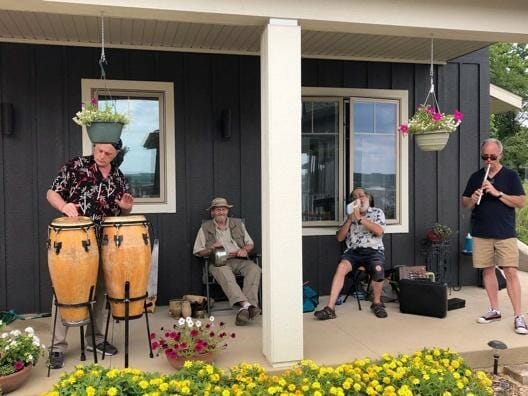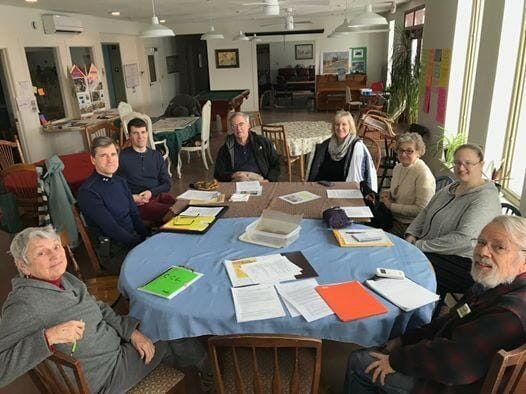
Background
Prairie Hill is a cohousing community on an 8-acre site in Iowa City, Iowa. It got its start in 2009, and they started construction in 2017. At this time (spring, 2020) they have built their common house and about 30 of their 36 units.
How did the Prairie Hill community start using sociocratic governance?
Some of the founding members had an interest in sociocracy from previous experience. They learned about resources from Sociocracy for All. Two members attended the Sociocracy Leadership Training course, and several attended national Cohousing Conferences, where they took part in workshops on sociocracy.
How have community members learned how to use sociocracy?
The community has had a small core of dedicated sociocracy advocates. As the membership in Prairie Hill expanded, not everyone was familiar with or convinced about sociocratic governance. With Ted Rau, they started holding a “Sociocracy 101” course, a series of two-hour online training sessions for small groups of 6-7 people. The small groups gave people a chance to discuss and try out the techniques. All members of the community were invited, but not required, to take part. Through these sessions over the course of about two years, 22 of 30 individuals were educated in the basics of sociocracy. Some people have taken it more than once. The course was offered until no other members were interested in taking it.
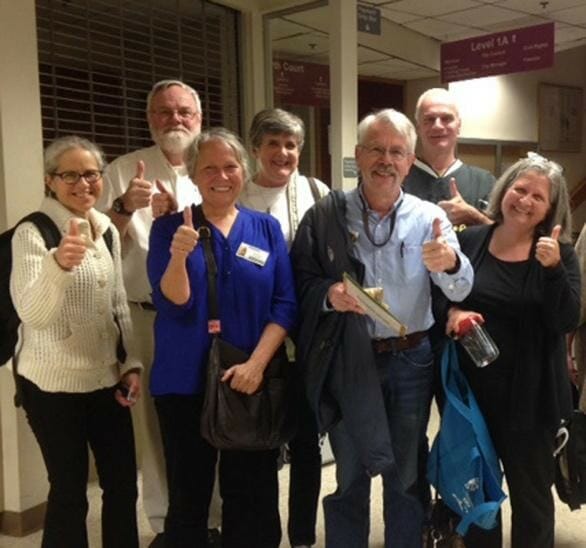
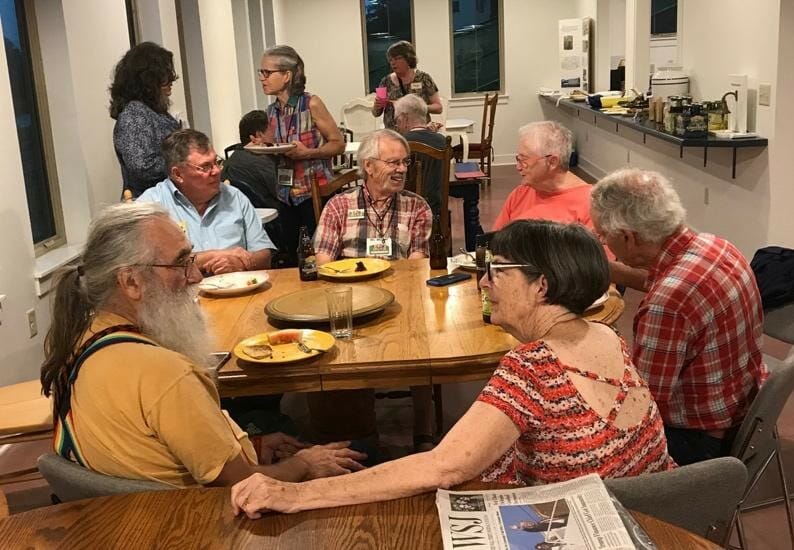
What went well during implementation?
The community had a multi-pronged approach. Early on, the sociocracy advocates played a large role in practice. They were on multiple circles, wrote governance and other policies, and served as informal mentors. They were key to the culture change, as it was harder at first to persuade other people of the usefulness of sociocratic methods. Since it took a while to build enough trust in the small groups to shift authority to them, most decisions were initially made by the whole group.
Of sociocratic methods, rounds were most easily adopted and have made a big difference in the character of meetings. It has definitely helped give everyone an equal voice.
In addition to the members who took the Sociocracy 101 course, everyone was invited to check out videos and readings online. A ten-minute sociocracy lesson was incorporated into monthly general meetings. And some of their working circles adopted the practices. Overall, their feeling is that it’s been good to invite rather than require people to learn about sociocracy, although it means allowing time for people to find their own way to a readiness to learn.
What could have been improved?
Learning and using sociocratic governance has been uneven. While many have become experienced in sociocratic governance, there are some people who are not interested in learning it. It is now used regularly in general meetings and some working circles. One of the community’s biggest challenges has been the formality and specialized vocabulary of sociocracy. They have found their own way to adopting what is meaningful, while allowing space for what was working without it.
How do you introduce sociocracy to new members?
Sociocracy 101 is offered to new people who join the community once there is a small group. Since the culture is now prevalent in the community, newcomers get to see it in action and tend to catch on more quickly.
Did the community also learn how to use Non-Violent Communication?
Several people were familiar with NVC, which they feel has been an important complement to sociocracy. They have conducted several sessions for everyone and are exploring the possibility of holding a joint workshop with a local college.
What were some unexpected effects of using sociocracy?
Sociocracy has reinforced some practices that were already embedded in the community. Those practices continue and work well with formal sociocracy. The community has experienced the effectiveness of sociocracy in turning emotionally-charged issues into decisions that everyone is satisfied with. More than once, the outcome is a solution that no one imagined before the discussion and is better than any of the proposals offered. The community has also benefited from objections and criticisms, which have helped everyone learn. They’ve learned how important it is to follow sociocratic processes, not only when considering something “important”.
What is your community governance structure?
The HUB (the Board of the Prairie Hill Owners Association) is responsible for ongoing community work, while the Board of Managers (BoM) takes care of construction and development related tasks. The HUB coordinates and links the work of the PHOA circles: a) Community Life, b) Land (and Garden), c) Buildings & Grounds (including garages and shop), and d) Finance and Legal. The authority to make decisions within the area of responsibility (domain) of a particular circle rests with that circle except when it involves spending money that is in the BoM’s LLC development budget. The HUB and BoM are double-linked with each other. The Board of Managers operates more conventionally with committees that make recommendations to the board. The two finance and legal committees/circles are separate with separate budgets but coordinate with each other. The BoM and its committees will cease to exist for their current purpose or at all when construction is complete. Some responsibilities, such as ongoing membership and publicity work, will shift to the PHOA circles
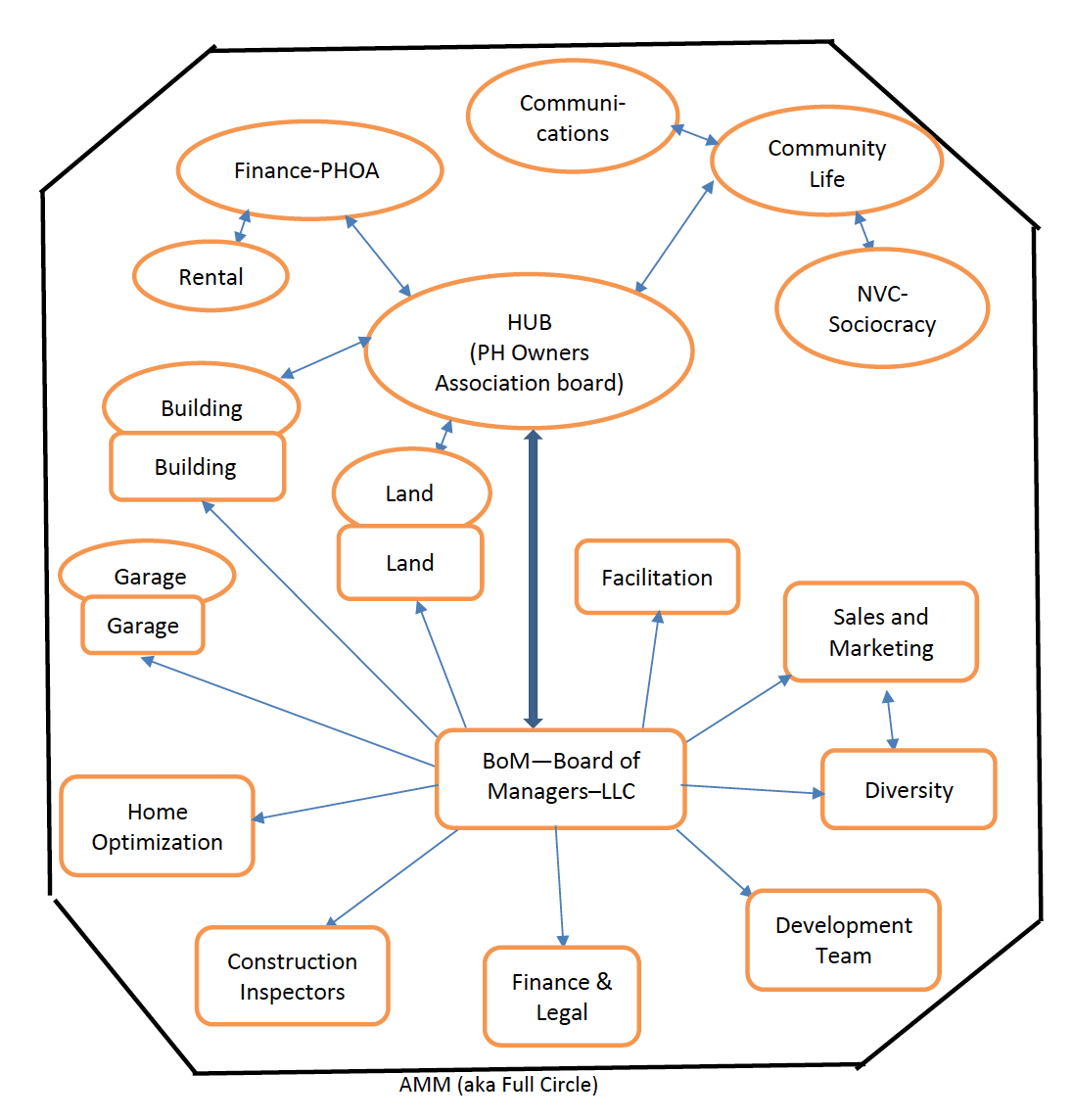
What role has sociocracy played in conflict resolution?
Over the years, several tensions have been resolved using sociocratic methods, which helped some of the more skeptical members see their value. Many non-sharing or inconsiderate behaviors have disappeared since the community began practicing sociocracy.
What are the challenges of sociocratic governance?
First, the value of it often isn’t recognized in the absence of something that clearly isn’t working. Second, it tends to appeal to people who are educated and concerned about social justice, which is the market for cohousing but a narrow slice of society.
What are the benefits of sociocratic governance?
Sociocratic practices, particularly rounds and consent, have led to better decisions than they would have had otherwise.
Sociocracy’s impact is as much on its social fabric as its governance. It helps build and sustain strong relationships among people in the community.
A round is a power-leveler and connector that brings out people’s best selves.
The community’s values of respect, openness, honesty, and connectedness have all been strengthened by sociocracy. It helps everyone avoid stereotyping others or dismissing their contributions for emotional reasons.
Sociocracy is a great way to resolve tensions and conflict, but only if the community has been practicing it. The greatest benefits come from the culture change.
What is the current status of the community’s use of sociocracy?
Today the culture of sociocracy is fairly well established and appreciated, though they do not think they are fully practicing it. Since they felt it would be better to allow individuals and circles to adopt it at their own pace, their circles tend to operate at different levels of practice.
The book, Many Voices One Song is a great resource. It is helpful to have refreshers from time to time to help continuously improve.
How do you expect your governance to change in the future?
They see themselves as a learning community, so they are evolving. Their community is still in formation, so there’s been a lot of focus on development. This will shift, and as people work on different things, there will be opportunities to share sociocracy with people outside the community.
What message would you give others about using sociocracy?
They have seen its usefulness in action while they are in the process of learning and adopting it. They would say it doesn’t have to be “pure” or practiced entirely “by the book”. Rather, as long as it’s part of a culture of respect and connectedness, a community that takes a pragmatic approach will find it helpful, sometimes unexpected ways.
Learning to listen to every voice as equally important could be what makes the community work.
